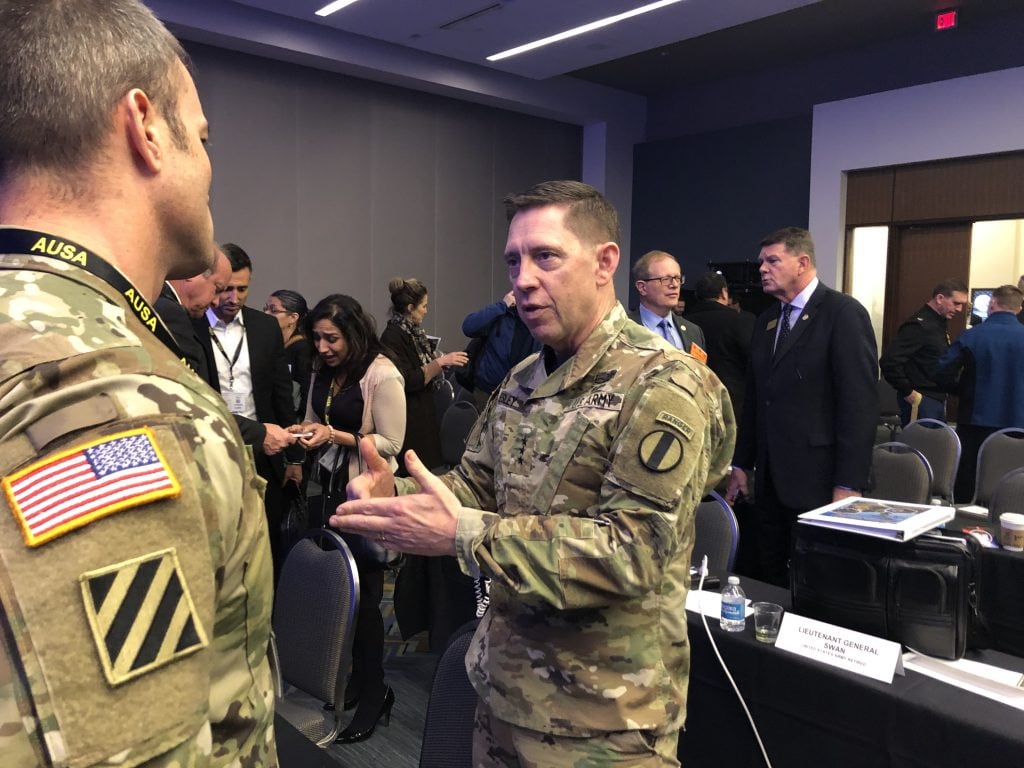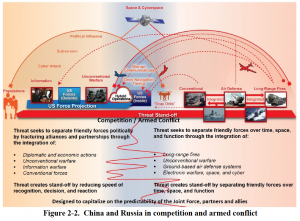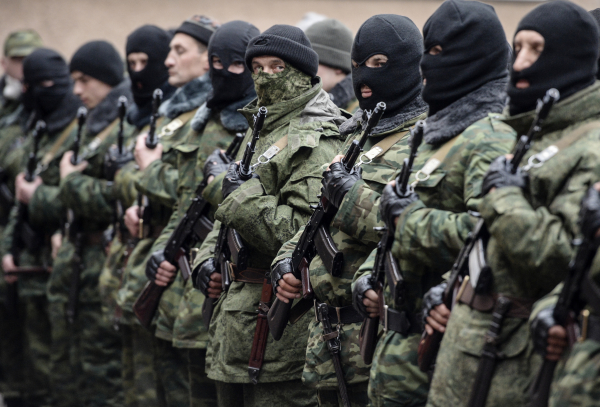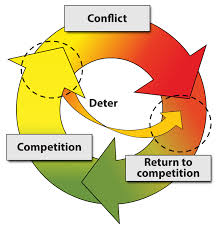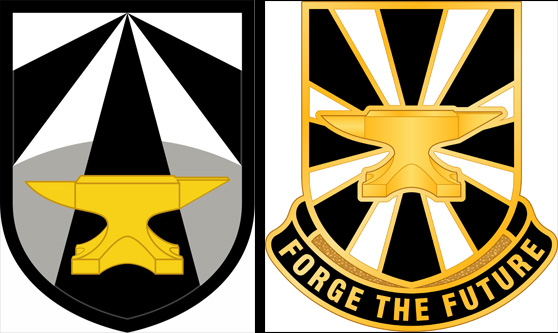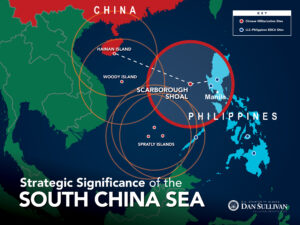Services Wargaming Multi-Domain Consensus: Army 3-Star Futurist
Posted on
PENTAGON: The four armed services have kicked off a series of ambitious wargames to thrash out what promises to become a common concept for future conflict, the Army’s three-star senior futurist says.
They’ve reached what amounts to a baseline consensus on their approach: a relentless, seamless, coordinated campaign to hammer the enemy from every angle – land, sea, air, space, and cyberspace. They’ve even reached agreement on what the hardest part will be, Lt. Gen. Eric Wesley told reporters on Wednesday: exercising command and control (C2) of such disparate, fast-paced operations. How to solve that problem? Well, that’s a work in progress.
“All the services understand the need to move to Multi-Domain Operations,” Wesley said. “Second, we all agree that MDC2 [Multi-Domain Command & Control] is the most important joint problem that we have to solve. After that, the specifics of how you conduct MDO – that’s where the variance is that we’ve got to converge on.”
And that’s what the wargames are for. While Wesley didn’t give many details (most of which are classified), he appeared enthused about their progress. “What we’ve been encouraged by over the course of the last three experiments that we did … is we are getting traction on this concept [more than] we’d seen in exercises over the previous two years,” he said. “We achieved things that we didn’t achieve before.”
It’s important to note that the wargames Wesley is talking about are all simulations and seminars, not field exercises. Much of the technology needed to conduct multi-domain operations just doesn’t exist yet: 1,000-mile missiles, high-speed helicopters, robotic logistics, and above all the smart networks required to coordinate, say, an Air Force hacker tricking an enemy radar into ignoring a Navy fighter as it strikes a target spotted by Army soldiers with artificially intelligent eyewear. That said, the Army does have a prototype Multi-Domain Task Force in the Pacific that has been exploring the limits of what’s possible with today’s equipment.
Grey Zone Blues
Wesley was particularly enthusiastic about progress figuring out how to handle what happens before – or hopefully, instead of – open war. That’s the constant back-and-forth of hacking, disinformation, economic pressure, covert operations, and overt military maneuvers that Russia employs against Ukraine and China in the South China Sea.
Some officers and experts call this the “grey zone” between genuine peace and conventional war, a blurry borderland where Western concepts, norms, and laws cope poorly with ambiguous, unscrupulous threats. The official Pentagon term, enshrined in former Defense Secretary Jim Mattis’s National Defense Strategy, is “competition,” which is distinguished from armed “conflict.” That said, from a potential adversaries’ perspective, any distinction is artificial: War is politics by other means and politics is just another form of war.
Wesley acknowledged that operating in between peace and war is difficult for the United States. But, he said, you can’t ignore this “competition space,” because it’s where you lay the critical groundwork for any armed conflict that might follow. “Leveraging the competition space, we found, is the most important aspect of getting that conflict portion right,” he said. “That’s something we have to expand our capabilities in and we’re not completely postured to do right now.”
Specifically, Wesley sees three crucial activities in “competition” that prepare for “conflict” (or, ideally, deter it altogether):
- Countering “information warfare and unconventional warfare.” That means coping with a whole spectrum of ways the adversary might influence, subvert, or demoralize a country’s population, from spreading fake news on social media to staging terrorist attacks on public landmarks.
- “Continually assessing” the enemy forces. That’s everything from old-school “order of battle” intelligence work to figure out what unit is where – an art largely neglected since the Cold War – to electronic probes to “stimulate” enemy sensors, tricking them into turning on so you can study how they work.
- “Calibrated force posture.” That refers to the mix of forces already deployed in the potential conflict zone, forces available to deploy from the US, and strategic assets – from cyber operators to satellites to long-range bombers – that can reach out and touch anywhere in the world.
Futures Command, Today
What’s Lt. Gen. Wesley’s place in all this ferment? He commands the Fort Eustis, Va-based organization formerly known as ARCIC, now renamed Futures & Concepts Center and reporting to the newly created Army Futures Command in Austin. ARCIC/Futures & Concepts has played a leading role in developing what they originally called Multi-Domain Battle, convincing the Marine Corps to sign on, and eagerly picking up the Air Force’s formulation that the central problem would be Multi-Domain Command & Control. (The Navy’s involvement has been more limited).
But Wesley’s organization isn’t just changing its name. As part of Army Futures Command, the Futures & Concepts Center is taking on new jobs that it didn’t do at ARCIC.
One new responsibility is crafting an Army Modernization Strategy to guide the entire service and Annual Mission Guidance to update that strategy every year. Wesley is reallocating some of his existing personnel and funding to create a small staff dedicated to writing those documents, he said.
Wesley is also creating a Future Operational Environment (FOE) cell to track emerging threats and other factors the Army will have to cope with. Some of these personnel are already on his staff, he said, while others will come over from ARCIC’s former parent organization, the Training & Doctrine Command (TRADOC).
At the same time, even though the Futures & Concepts Center is no longer part of TRADOC, it’ll rely heavily on TRADOC support to function. The new Future Operational Environment cell will be co-located with TRADOC’s intelligence staff (section G-2), for example, on the same building and in fact the same floor. TRADOC HQ will also continue to perform a host of administrative functions so neither Futures & Concepts nor the relatively small Army Futures Command HQ will have to create a massive staff of their own.
That kind of bureaucratic backup will allow Wesley’s organization to focus on its critical mission: thrashing out new concepts in wargames and exercises. Some of that work will be done in-house at the Futures & Concepts Center, he said, but much of it will be done by other organizations across the Army under Futures & Concepts guidance. To oversee these efforts, he said, the old TRADOC Analysis Center (TRAC) will become a part of Wesley’s organization, where it will gather data from experiments across the Army, crunch it, analyze it, and lay the foundation for the next series of experiments.
“We need to give very specific requirements to those at lower echelons within the Army to experiment on,” Wesley said. Instead of a rigid schedule of annual wargames hosted by this organization or that on whatever topic they choose, he said, “we will tailor all of our experimentation to the specific problems we have to solve” – especially Multi-Domain Command & Control.
And the innovation never stops, he said: “The data that comes out of that experimentation…. then drives the next experiment.”
Subscribe to our newsletter
Promotions, new products and sales. Directly to your inbox.

